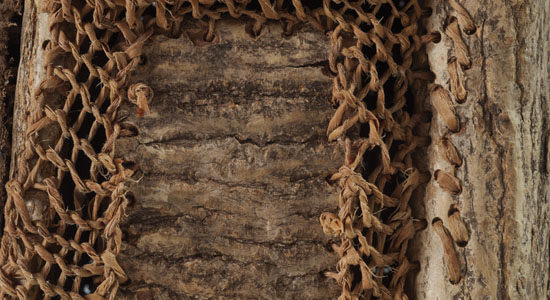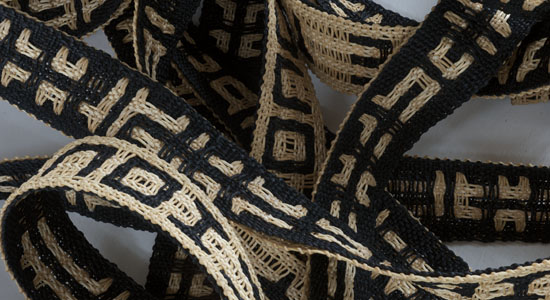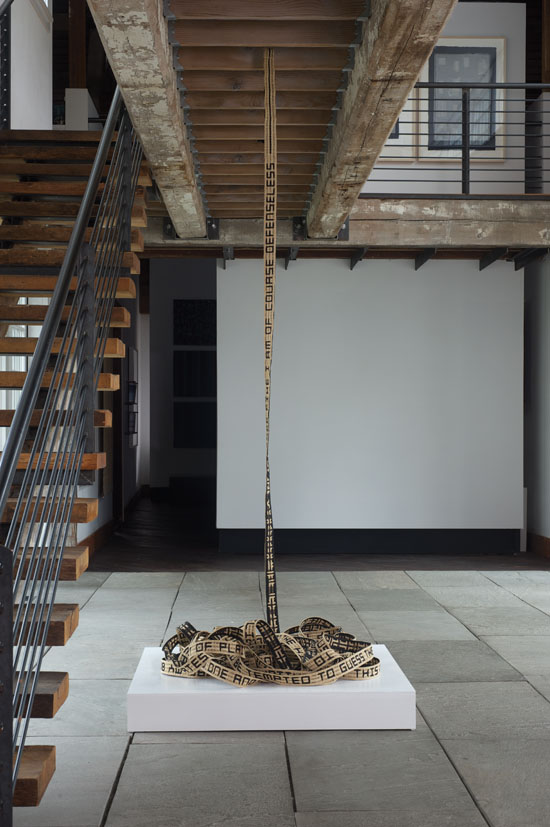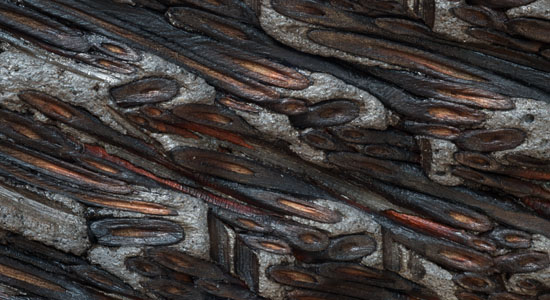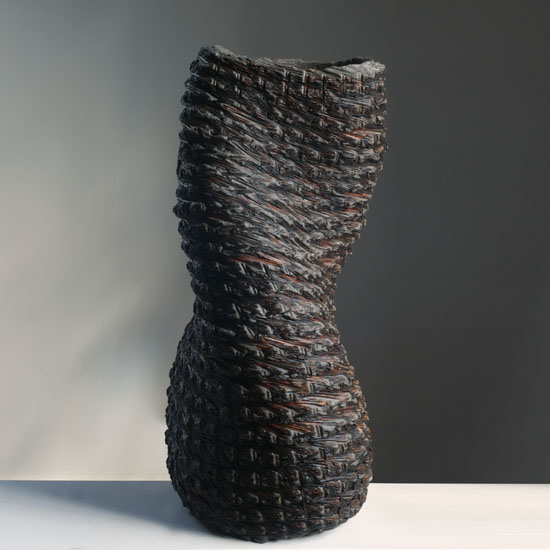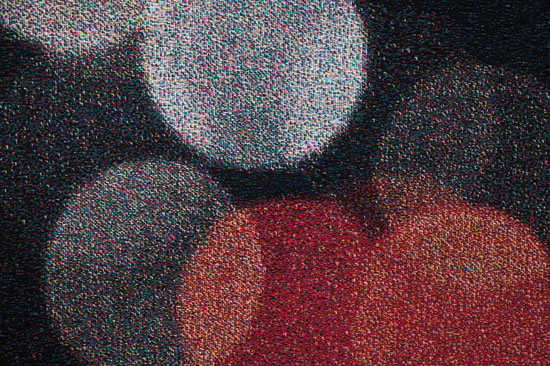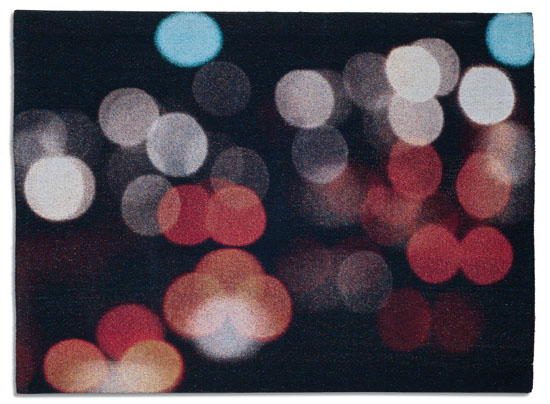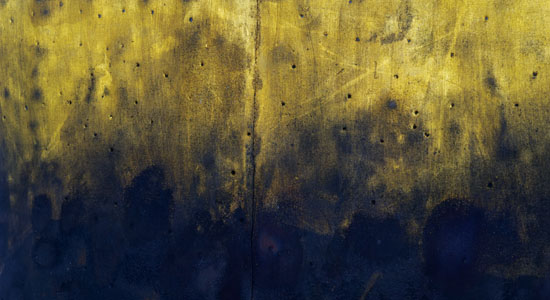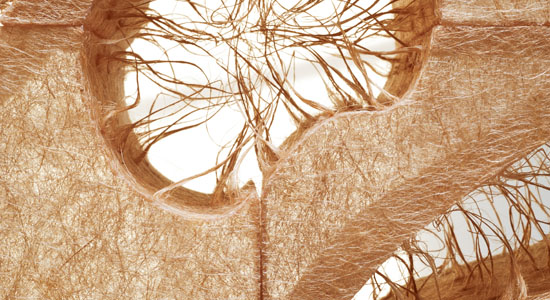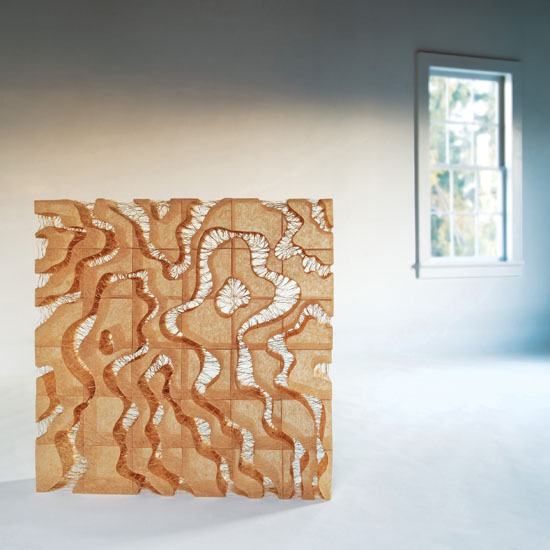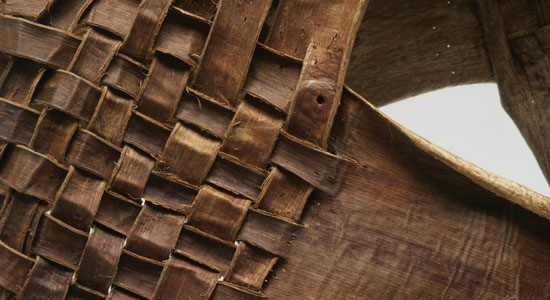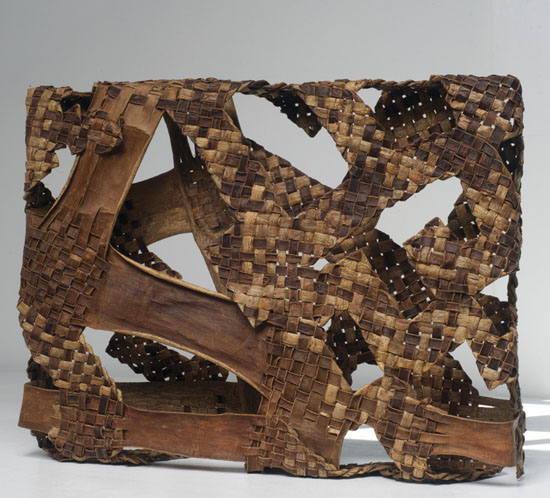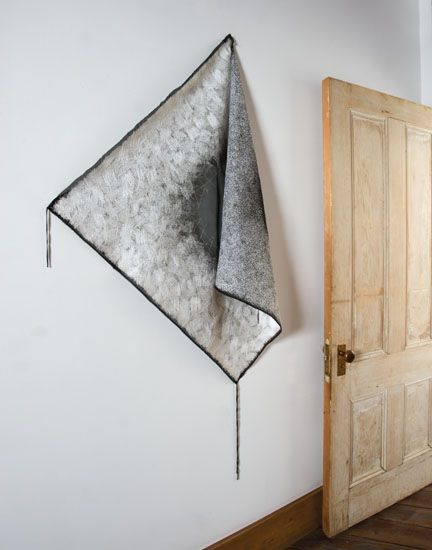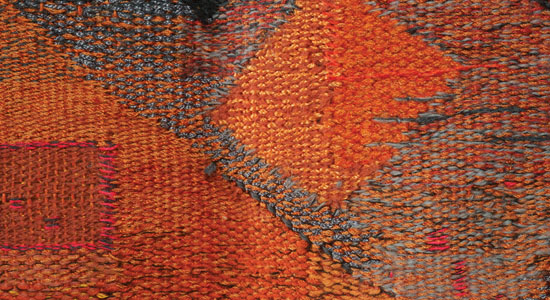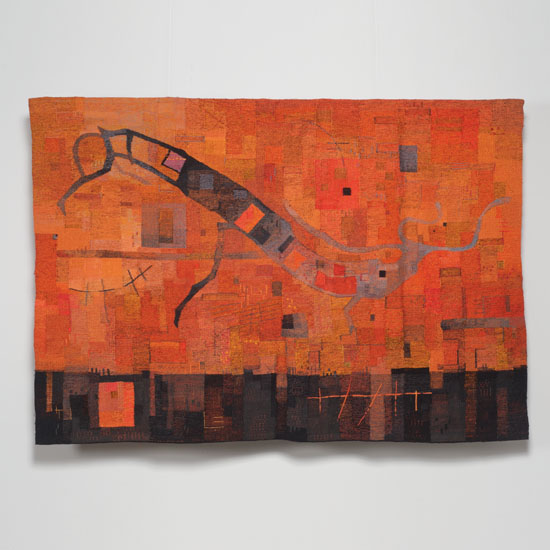Sculptures of bark by Masako Yoshida are among the works that browngrotta arts will feature at SOFA NY. The constructions Yoshida envisions are built by interlacing sheets of walnut bark with string made of nettle. “I consider myself a member of society who wants to make works that open into the new world earnestly, one step at a time,” Yoshida finds that her work provides her “a means of release, allowing the truth to emerge and open the mind. In the process, I ask myself, ‘what is my connection to society?'” Yoshida has studied basketmaking with noted teacher and artist, Hisako Sekijima.
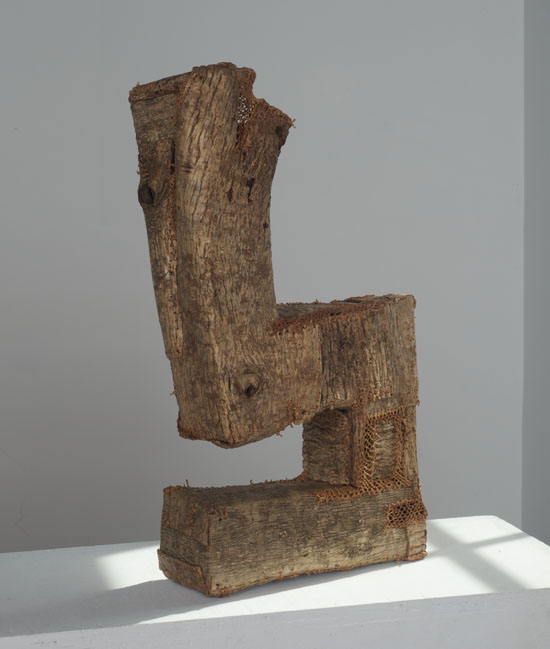
11my Kuu#441, Masako Yoshida;, walnut and maple, 20.5″ x 12″ x 4.25″, 2007-2010, photo by Tom Grotta
She graduated from Musashino Art University, majoring in textiles and has since worked there as instructor. She has also taught at Tamagawa Institute. Her work has been exhibited at the Nagoya Trade and Industry Center (In Our Hands) Japan; Iwasaki Museum of Art, Yokohama, Japan; Megro City Museum, Japan; Takashimaya Department Store (Amu Kumu solo exhibition); Tachikawa, Japan; Nuno Annex Exhibition (solo, traveling exhibition); Wayne Art Center, Pennsylvania (Green for the Get Go).

